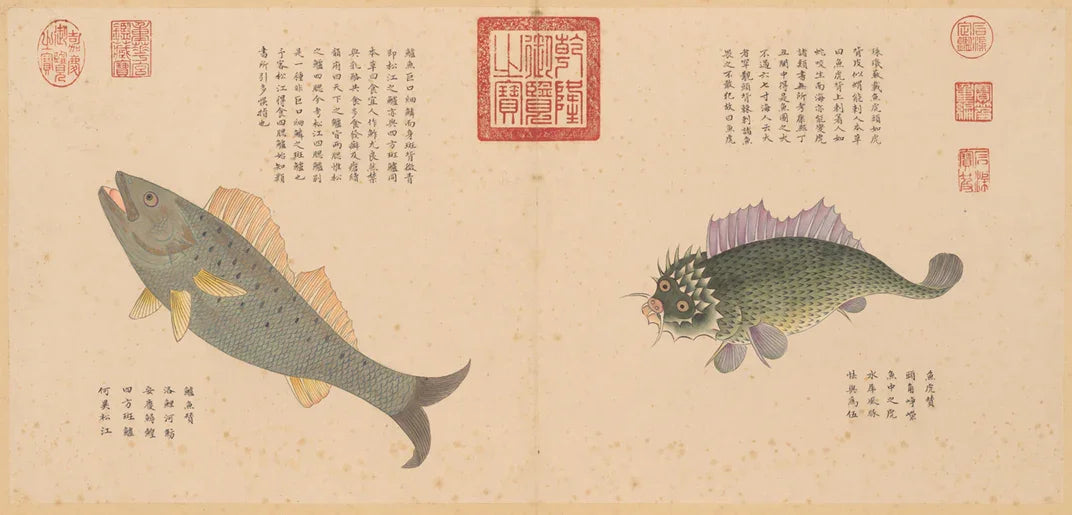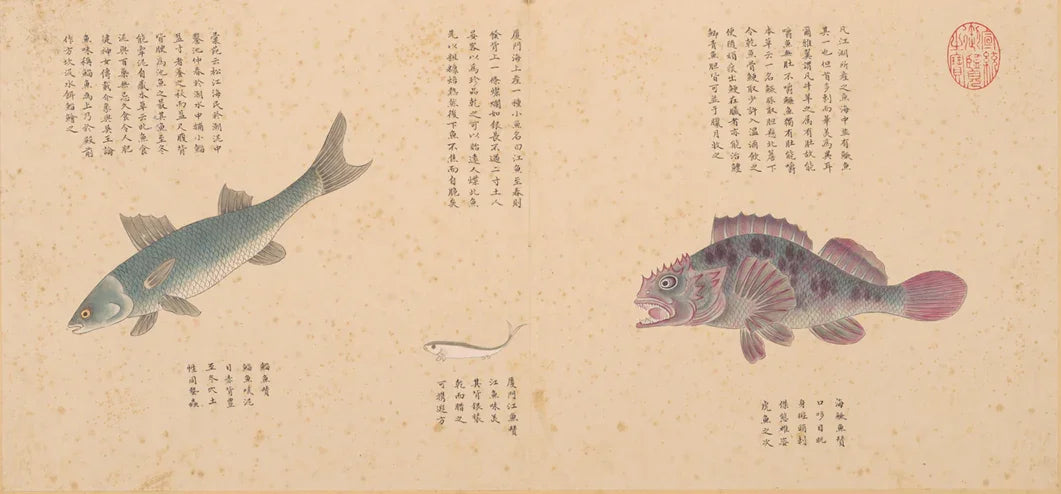JLbook Store
Ancient marine life illustration-PDF
Ancient marine life illustration-PDF
Couldn't load pickup availability
The "Sea Monsters Chart" was painted by the Qing Dynasty artist Nie Hong. The complete set consists of four volumes (the first three volumes are stored in the Beijing Palace Museum, and the fourth volume is stored in the Taipei Palace Museum), describing over 300 species of organisms, and also records many coastal plants, making it an ancient marine life atlas. In the gaps where each species is drawn, text descriptions are provided to introduce the origin of the names of the depicted objects, as well as their places of origin, physical characteristics, and other details, accompanied by a short verse of praise.
The term "Sea Monsters" comes from the "Yu Gong" section of the "Book of Documents": "Its tribute includes salt and silk, and the sea creatures are diverse." "Chao" means numerous and mixed, so "Sea Monsters" refers to the diverse organisms in the ocean. Therefore, at least since the Western Han Dynasty, the Chinese have used "Sea Monsters" to refer to marine life. Thus, the "Sea Monsters Chart" is essentially an ancient marine life atlas. Nie Hong can be considered a Qing Dynasty naturalist because the "Sea Monsters Chart" includes all kinds of things. During the Kangxi era, he traveled to multiple places in Hebei, Tianjin, Zhejiang, and Fujian, studying coastal organisms, spending a long time living along the coast, and showing great interest in coastal life. He was troubled by the lack of any related charts of marine life passed down through the ages, so he decided to paint his own. Whenever he encountered a new species, he would draw it and consult various books for verification, and he would also ask local fishermen to confirm the accuracy of the records in ancient texts. After decades of accumulation, Nie Hong finally completed the "Sea Monsters Chart" in the 37th year of the Kangxi era (1698 AD) — this is also his only surviving work.
Nie Hong distinguished himself from previous painting styles by emphasizing the use of text to supplement the images. In the gaps where each species is drawn, he provided text descriptions to introduce their names, places of origin, physical characteristics, life habits, and accompanied them with a short verse of praise, integrating knowledge, literature, and interest into one, making it engaging and full of charm to read. However, due to the author's limited understanding at the time, the records in the book are not without exaggeration, and the descriptions of the habits of marine organisms also contain a mix of truth and fiction.
After the completion of the "Sea Monsters Chart," there were no dedicatory inscriptions on the images. According to imperial archives, the "Sea Monsters Chart" entered the imperial court during the Yongzheng era and was then known as the "Fish Spectrum." Later, emperors such as Qianlong and Jiaqing were very fond of this chart, and it was even re-mounted during the Qianlong era. It was later included in the "Continuation of the Precious Records of the Stone 渠." During the Republican era, when the Palace Museum artifacts were moved south, the "Sea Monsters Chart" was separated. Now, the first three volumes of the "Sea Monsters Chart" remain in the Beijing Palace Museum, while the fourth volume is stored in the Taipei Palace Museum. (Reference introduction)
Share



